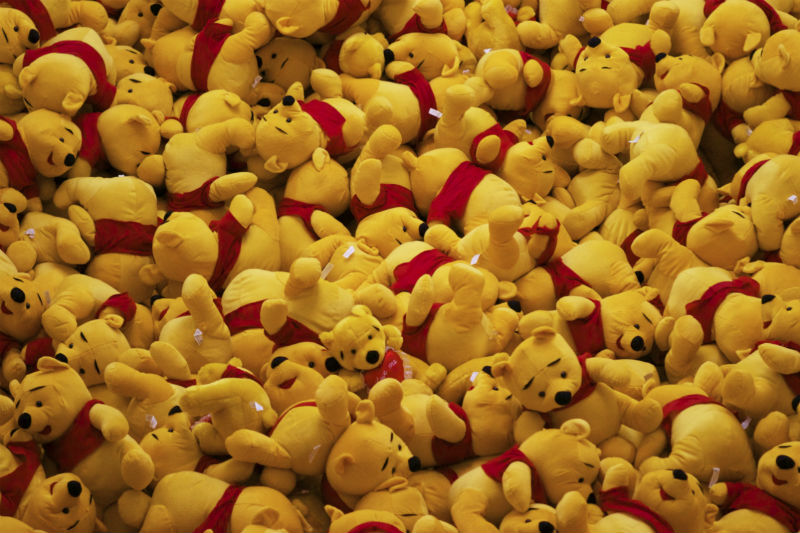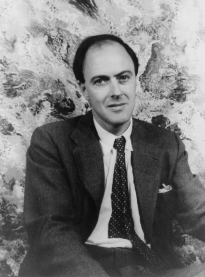
He is famous for his love of honey, and being a bear of “little brain”. So Winnie the Pooh might be a little surprised to find himself the subject of a major new museum exhibition.
Winnie the Pooh: Exploring a Classic will explore the creative partnership of writer A.A. Milne and illustrator E.H. Shepard. Together they produced the much-loved whimsical stories featured in Winnie the Pooh (1926) and The House at Pooh Corner (1928).
The decision by the Victoria and Albert museum in London to hold the exhibition proves that the bear and his friends have become establishment figures. As children’s literature expert Peter Hunt notes, they are “part of British culture, passing from generation to generation”.
One element of the incredible success of the Pooh books is that they reflect ideas about childhood that emerged in what is widely known as the “golden age” of children’s literature, spanning from the mid-19th century to World War I.
The golden age view of a child’s world was one that was close to nature – the child an innocent before the imposed horrors of school and education, and a figure of loss and nostalgia for the adult. This was very much the landscape of Winnie’s home in Hundred Acre Wood.
As cultural theorist Stefan Herbrechter said: “Children are supposed to live in a world of their own, which is clearly defined and marked out as the space and time for play and in which toys are the main objects and controlling devices of socialisation.”
However, Milne’s books are more poignant and have a slightly different flavour, than other examples, such as Wind in the Willows (of which Milne was a great fan, writing a stage adaptation). They came after World War I, when many illusions about innocence, the upper class, Englishness and patriotism had reached breaking point.
They contain traces of the experiences in the trenches that marked both Milne and Shepard, whose illustrations of carnage at the Somme and Paschendale were the subject of a separate recent exhibition.
The pastoral paradise of Hundred Acre Wood was one that Milne, who wrote passionately in favour of pacifism, conjured from his own childhood memories – back to a time before the terrifying intrusion and destruction of the war.
As such, Milne’s invented world is also saturated with loss, poignantly embodied in the depressed donkey character of Eyore, who sees no reasons to be cheerful. It is also haunted by the threat of leaving the safe space of the wood for places over the horizon that can’t yet be seen. When Christopher Robin and Pooh organise an “expotition” to the North Pole, they find a large pole in the woods and label it accordingly.
Toys, argues Herbrechter, are intimately concerned with storytelling. They are “like little story machines, narrative catalysers, objects that help make sense of the world”.
This idea is addressed with humour and complexity in Milne’s writing, and beautifully rendered in Shepard’s illustrations that always emphasise the “toyness” of the animals. It explains much about why these books have remained so loved.
Pooh the satirist
Milne shows his real life son Christopher (whom Christopher Robin was named after) how playing with his toys is a kind of writing, just as the playwright makes scenes for his characters. Before he wrote the Pooh stories, Milne worked as a playwright and as a satirist at Punch magazine.
We can detect the specific pleasures of introducing the craft of storytelling to his son from a man who made a living from writing. Milne’s stories gently teach the young credulous reader, who reads literally, that they may be other more rewarding ways of interpreting the world, and what the difference is between what people say and what they mean.
Milne offers the pleasures of word play. The narrator explains that “Winnie the Pooh lived in the forest all by himself under the name of Sanders”, which meant “he had the name over the door in gold letters and lived under it”.
The non-literal reader is invited to find this funny. Similarly, if Piglet says anything “carelessly” he is probably concealing a very important wish. He will say he isn’t afraid when he wants to appear brave.
Although the Pooh books were famously dismissed by fellow satirist Dorothy Parker, who wrote a dismayed and withering review of Winnie-the-Pooh, the success of Milne’s works suggests that he managed to translate his love of making stories into a form that beguiled the child reader. Stories which showed how they too might make an imaginative life for themselves in the world of storytelling and understand how to master words and meanings.
In one notable scene Pooh finds himself stuck on the doorway to Rabbit’s house, and must wait for a week until he is thin enough to be pulled free. Christopher Robin sits down with him and reads him a “sustaining book”, such as would help and comfort a Wedged Bear in Great Tightness.
![]() The comforting presence and companionship of a good book is something all readers of Pooh take away with them. And it is perhaps this which explains the enduring popularity of these stories, which taught us how to read and write in our own way.
The comforting presence and companionship of a good book is something all readers of Pooh take away with them. And it is perhaps this which explains the enduring popularity of these stories, which taught us how to read and write in our own way.
This article was originally published on The Conversation. Read the original article.


Rate and Review
Rate this article
Review this article
Log into OpenLearn to leave reviews and join in the conversation.
Article reviews